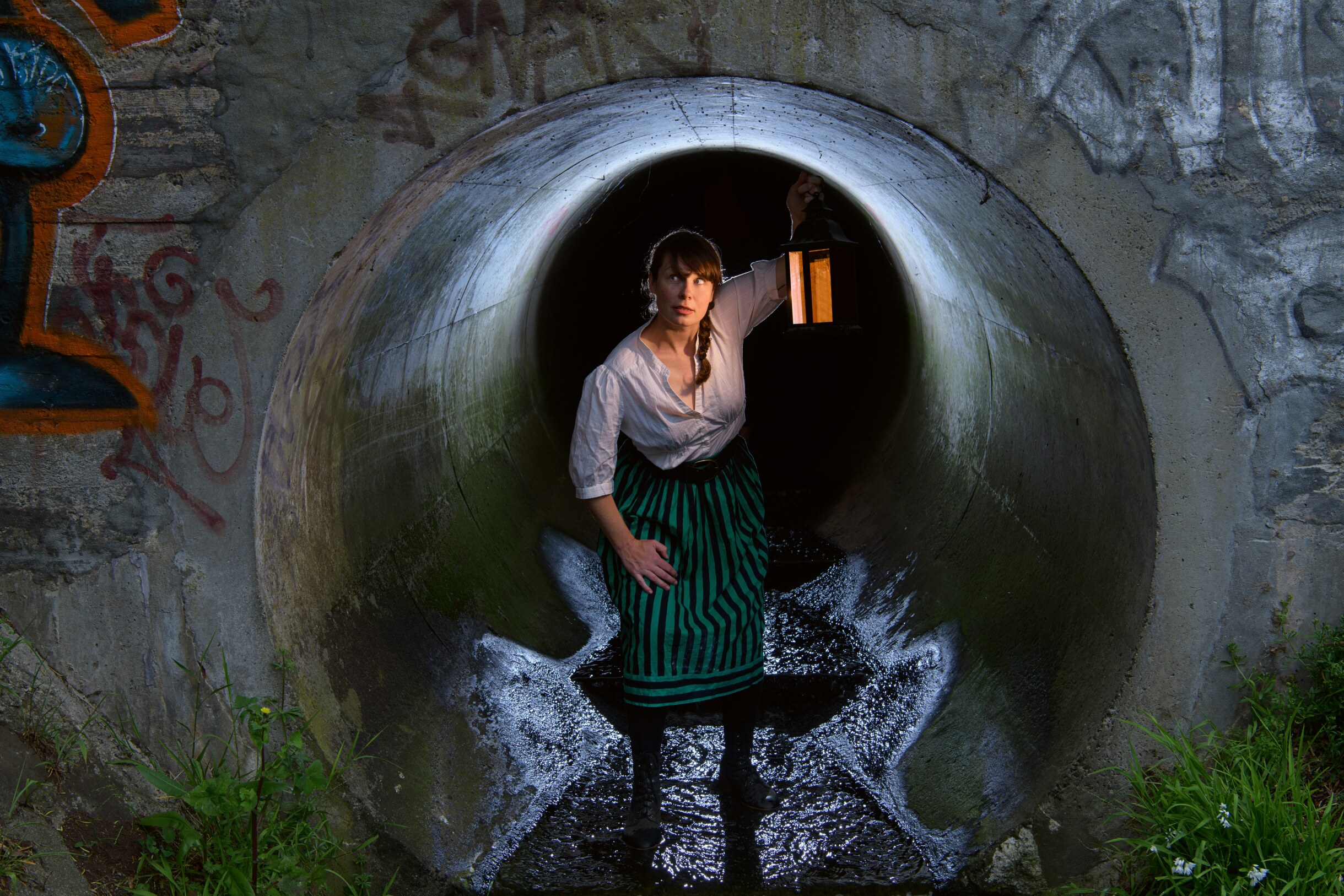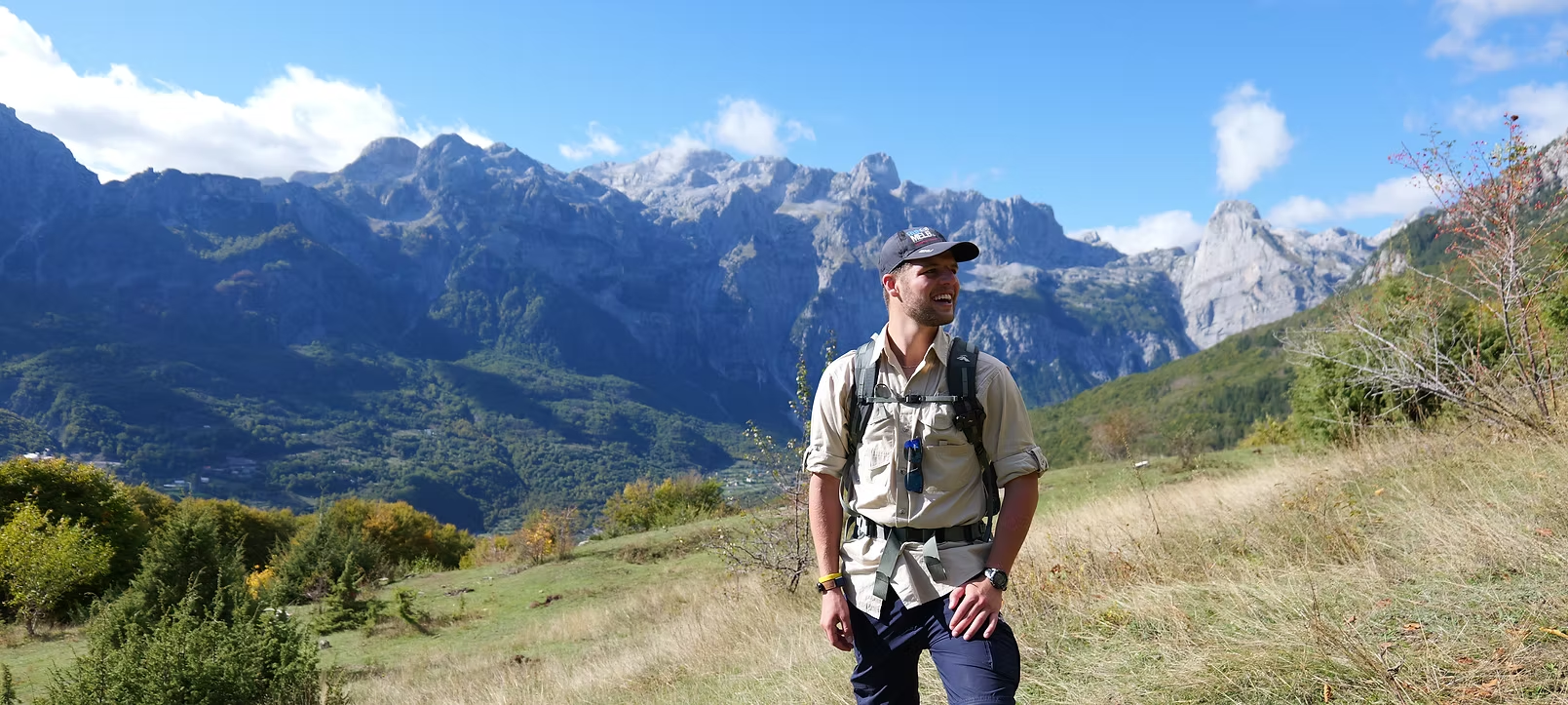Community Surveying of Victoria's Superb Lyrebird
Science Victoria Edition
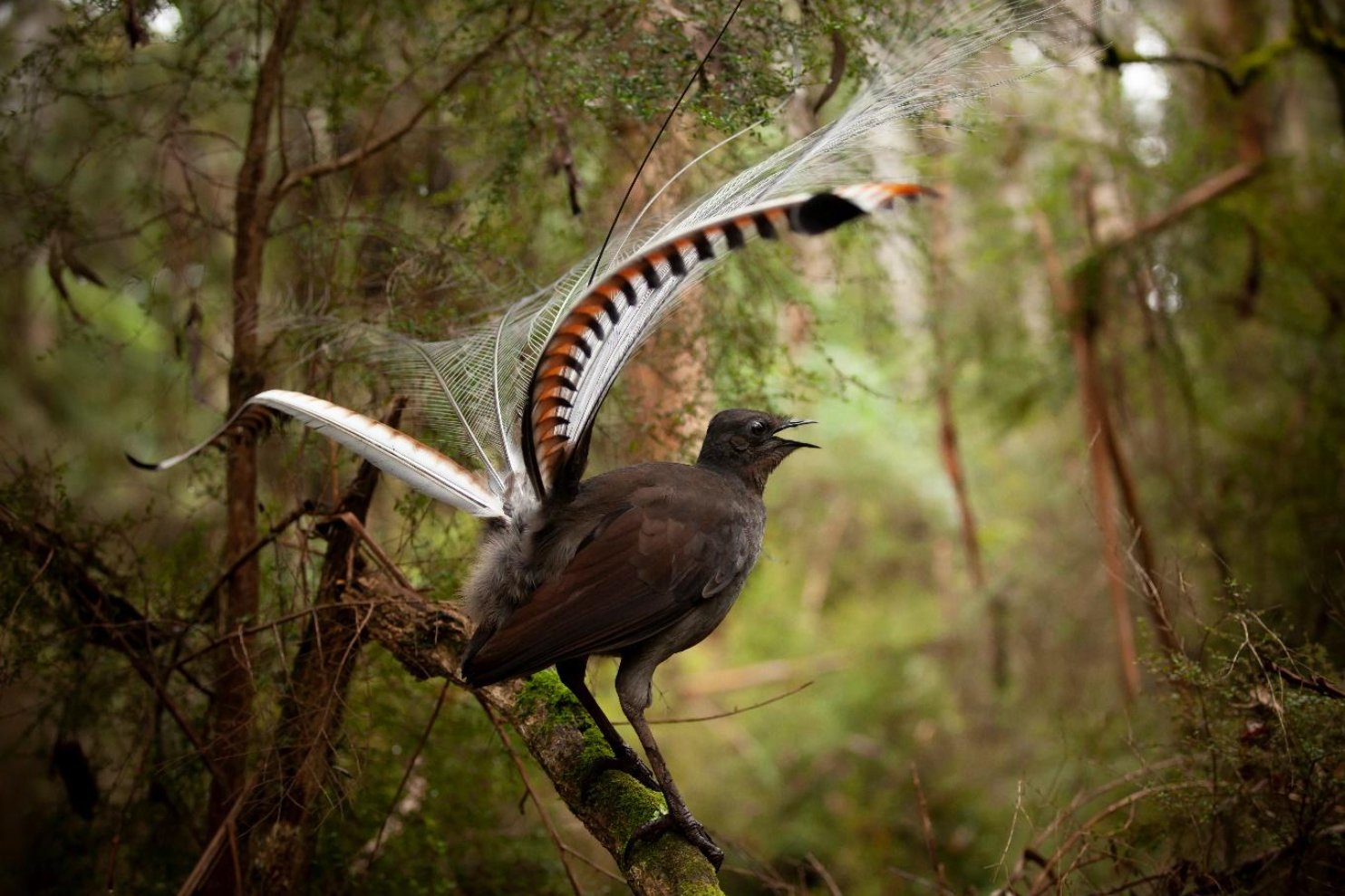

Ecologist, La Trobe University
Walking through the tall eucalypt forests of southeastern Australia, if you have sharp ears you might hear a familiar kookaburra cackle curiously close to ground, followed by the crisp crack of a whipbird, and a rush of crimson rosellas, complete with the flutter of their wings slicing the crisp forest air. Yet the disturbance of the parrots seems not to move. It remains oddly fixed in the undergrowth. Because, in fact, all these noises come from a single displaying lyrebird.
The Superb Lyrebird is a much-loved symbol of Australia’s birdlife, world-famous for the remarkable mimicry of the males during their winter courtship displays. Their intricate song is paired with a highly structured dance and tail display1, comprising elaborate footwork and jumps coordinated with otherworldly sounds. Their performance is critical to their future, because it’s subject to the discerning judgement of the female birds.
These theatrical expressions of evolution are performed upon stage-like ‘mounds’, constructed by the males. They are carefully positioned in dense understorey where shafts of light filter through the canopy to enhance the drama of the visual display2.
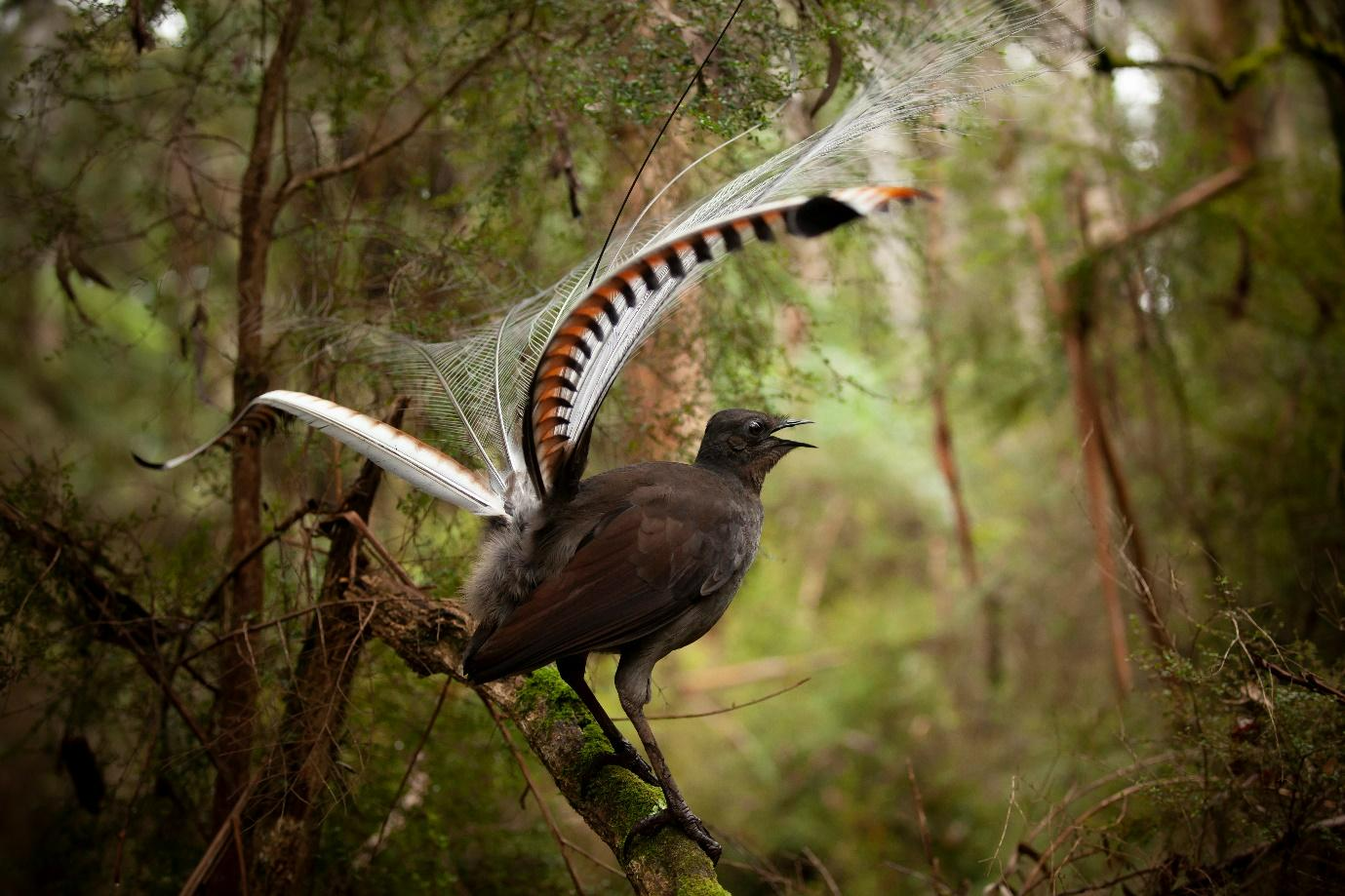
The Lyrebird in Victoria
Just as remarkable as its display has been the ability of this relatively large bird to persist in the face of habitat modification and loss, creeping urbanisation and the introduction of predators such as foxes and the domestic cat.
But the lyrebirds have not been without human supporters. In 1958, the Sherbrooke Lyrebird Survey Group was formed to protect and study the birds, partly in response to fears of habitat loss to pine plantations for timber. After sustained lobbying, the last plantation was removed by 20004.
In 1975 - more than a decade before the Dandenong Ranges National Park was formerly declared4 – the survey group began an annual dawn lyrebird survey to count singing male lyrebirds. The first counts were small affairs, carried out only by members. But by the 1990s, the survey had grown into a community tradition, supported by a wide network of volunteers - a legacy that continues today.
They are one of the reasons the spectacle of a lyrebird display can still be seen just 40 kilometres from Melbourne’s CBD, in Sherbrooke Forest, part of the Dandenong Ranges National Park,.
The decline
After colonisation, the lands of the Wurundjeri - the First Nations custodians of Mt Dandenong and surrounds - were stripped of much of their forest. Through the late 1800s and early 1900s the tall timber was felled by hand and hauled away by bullock teams, as landholders were urged to make the land ‘productive’. In 1907, Sherbrooke was set aside as state forest, though logging continued until the 1930s3. By then, only fragments of the vast forest remained, clinging to the edges of streams and steep gullies beyond the reach of saws, sleds and jinkers. Through it all, the lyrebirds endured.
Farming was almost entirely abandoned throughout the ranges after the Great Depression, and smaller residential properties were established3. Vegetation was allowed to regrow, and forests slowly cloaked the hills once again. Many native understorey plants regenerated from soil-stored seed, while eucalypt seedlings germinated in the ashbeds left by two major wildfires that swept through the area in the 1920s4.
Sherbrooke has long drawn naturalists seeking the Superb Lyrebird4. Visitation to the forest has always been high, owing to its proximity to Melbourne and easy access via the Belgrave train line from 19003 on. Over time, the resident lyrebird population has become unusually tolerant of human visitors, rare for such elusive birds.
But this closeness to the city has also brought threats. Road traffic, wandering pets and the red fox5 - an efficient introduced predator which thrives on the urban fringe6 - have all put pressure on the lyrebirds. By the mid-20th century, these compounding threats appeared to be driving a severe population decline2,5. The advent of the survey group and its dawn survey has helped to alleviate this grim state of affairs.
Dawn survey
Although lyrebirds are famous for mimicry — echoing other birds, creaking trees and even mammals (but rarely humans) — they also have a rich repertoire of their own songs and calls. These vocalisations are often highly functional7. The best known is the powerful “whistle song,” thought to advertise a male’s territory to rivals. At more than 90 decibels — loud enough to damage human hearing — this call carries for hundreds of metres through the forest. Since the mid-1970s, the Sherbrooke Lyrebird Survey Group has relied on this territorial habit, triangulating the calls of each male during the dawn chorus to map its location.
Each winter, volunteers gather before dawn in the forest. Wearing scarves, gloves and beanies they cluster around a raging fire, receiving instructions before heading out under torchlight to different stations strategically positioned throughout the landscape. Each station must be staffed by an experienced campaigner, who can show newcomers how to undertake the survey.
At that hour, the forest is cold, dark and damp. The forest tracks squelch under muddy boots. Torchlight flickers on the trees as people navigate to their posts, often pausing to note the calls of threatened forest owls on their tally sheets. Soon, up to 60 people are spread across the tracks, compasses in hand, waiting in the half-light for the lyrebirds to begin their chorus.
As the first hint of dawn, the kookaburras erupt in raucous laughter to declare their territories. Soon after, the soft piping of the eastern yellow robin drifts through the trees. By around 7 am, lyrebirds begin to join the chorus. At first tentatively, as if warming up, before each male weaves together bouts of mimicry, intertwined with his own song, building to the intense whistle song that rings across the forest.
Surveyors must note the precise time of the first call, its direction and estimated distance. Using reports gathered from across the forest, each male can be pinpointed by triangulation. By 7.30 am, the chorus is at its peak — every male proclaiming to rivals and suitors alike, ‘I have survived the night; this territory is mine’. Then, the hardy volunteers make their way back to the picnic ground, for hot tea and a cooked breakfast by the fire.
Management Implications
The health of Australia’s environment is poor and deteriorating8. In Victoria, the state government has slashed millions from Parks Victoria, leaving the entire parks estate to run on less than half a percent of the state budget9. With fewer rangers on the ground, biodiversity monitoring now rests largely on the shoulders of skilled volunteers. While many people assume that monitoring is a basic part of park management, it is not.
On any given day, weather can influence how many birds are detected, but the strength of these surveys lies in their continuity. Conducted over decades, they are a rare long-term monitoring tool that park staff can use to reveal broad population trends and show how management actions and environmental change are shaping the fate of the lyrebirds in Sherbrooke Forest. Without this data as an indicator of population health, management is reduced to guesswork. The annual surveys can be used to trace the effectiveness of the fox control program, for instance.
Volunteers and the future
And the success of the surveys depends on the dedication of returning volunteers. Each listening post requires an experienced hand to ensure the survey methods are understood and followed. Some record calling males by means of sticks on the ground, others jot meticulous notes on draft datasheets for careful transcription over breakfast. Many have been involved for more than a decade, passing on their knowledge to newcomers year after year. While most are locals from the Dandenong Ranges, some travel from Melbourne just to take part.
Future generations will inherit the environmental successes and the failures of today. So it’s vital for conservation to support the inclusion, learning, and growth of volunteers. Yet attracting new people is a growing challenge in a society where volunteering is in decline10 and digital media competes for every moment of attention while potentially hindering environmental stewardship11. Even so, new voices are coming forward, bringing hope for a future that makes space for nature.
One of those voices is Allora Cumming, a young resident of Belgrave at the foothills of the Dandenong Ranges National Park. Allora is determined to protect the forest she calls home. She talks about her experience of the taking part in the survey, “You get up when you can still see the stars, walk around an ice cold forest in the middle of winter, and watch the sun rise while listening for mimicking birds. It’s one of the most exciting, heartwarming and invigorating things you can do to protect the lyrebirds and their home.”
“Through the whole event you know you are putting back into the world, whilst enjoying every bit of it,” she says, a reminder that the future of Sherbrooke Forest depends not just on the birds themselves, but on the people willing to stand up for them.
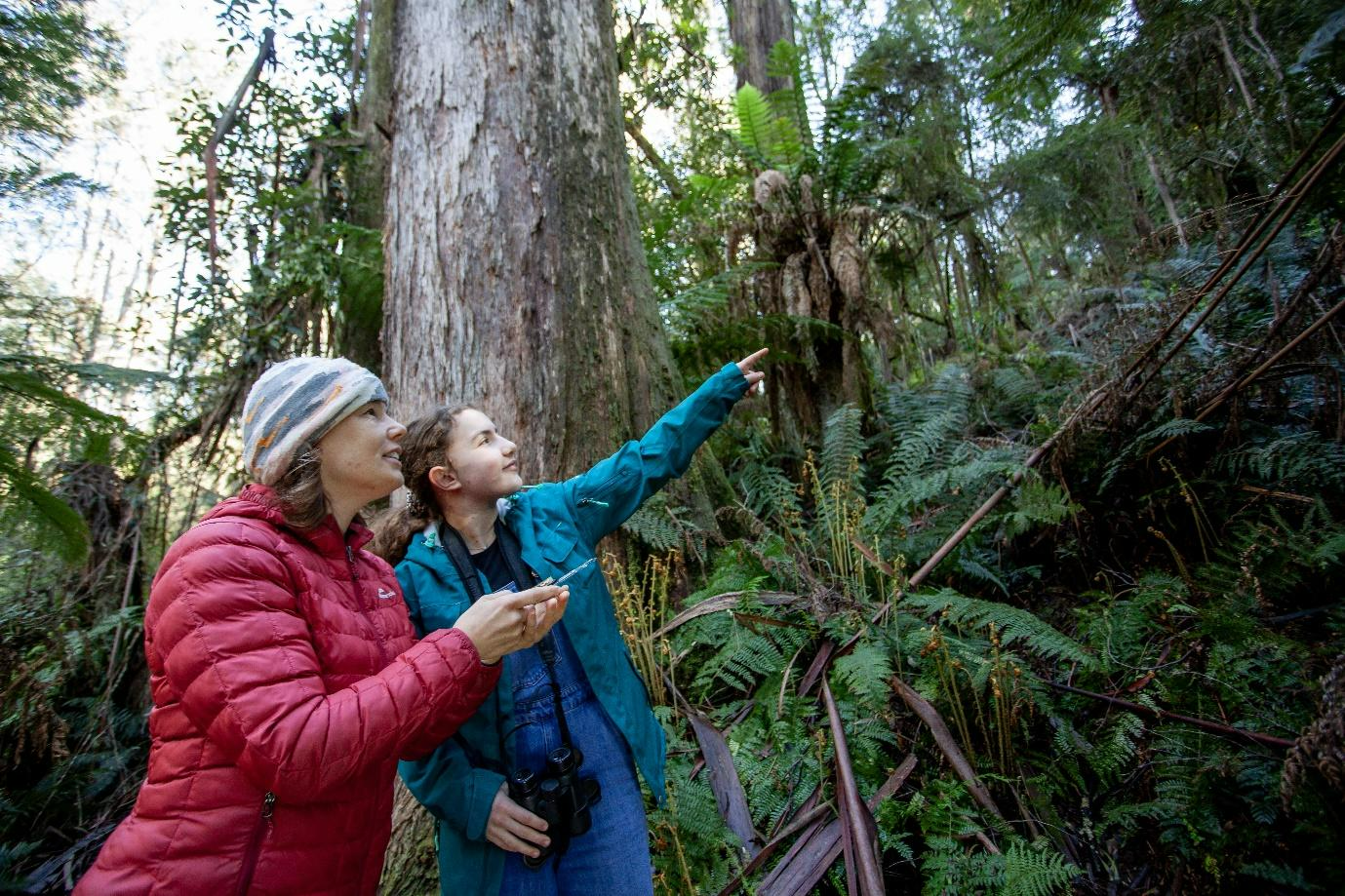
1 Dalziell, A. H. et al. (2013) Dance choreography is coordinated with song repertoire in a complex avian display. Current Biology 23: 1132-1135 https://doi.org/10.1016/j.cub.2013.05.018
2 Smith, L. H., (1988) The life of the Lyrebird. (William Heinemann Australia)
3 Schauble, J. (2024) Finding fact in fiction: A novel source of history in the Dandenongs. Victorian Historical Journal 95: 339-363
4 Friends of Sherbrooke Forest, (2000) Sherbrooke Forest : its flora and history, 2nd ed. 92 pp. (Friends of Sherbrooke Forest)
5 Smith, L. A., (1994) A critical analysis of the factors responsible for the decline of the Superb Lyrebird 'Menura novaehollandiae' in Sherbrooke Forest, Victoria. Australian Bird Watcher 15: 238-249.
6 Marks, C. A. & Bloomfield, T., (2006) Home-range size and selection of natal den and diurnal shelter sites by urban red foxes (Vulpes vulpes) in Melbourne. Wildlife Research 33: 339-347 https://doi.org/10.1071/WR04058
7 Dalziell, A. H. & Welbergen, J. A., (2016) Elaborate Mimetic Vocal Displays by Female Superb Lyrebirds. Frontiers in Ecology and Evolution 4: 34 https://doi.org/10.3389/fevo.2016.00034
8 Cresswell, I. et al. (2021) Australia state of the environment 2021: Overview. Independent report to the Australian Government Minister for the Environment, Commonwealth of Australia, Canberra. https://soe.dcceew.gov.au/
9 Ruchel, M., (2025) Our parks under attack in a swarm of spin. https://vnpa.org.au/our-parks-under-attack-in-a-swarm-of-spin/
10 Zhu, R. (2022) The decline of formal volunteering in Australia (2001–2020): Insights from the HILDA survey. Volunteering Australia.
11 Jacqmarcq, M. (2021) Environmental activism in the digital age. Flux: International Relations Review 11 (1) https://doi.org/10.26443/firr.v11i1.52
Discover how you can join the society
Join The Royal Society of Victoria. From expert panels to unique events, we're your go-to for scientific engagement. Let's create something amazing.





